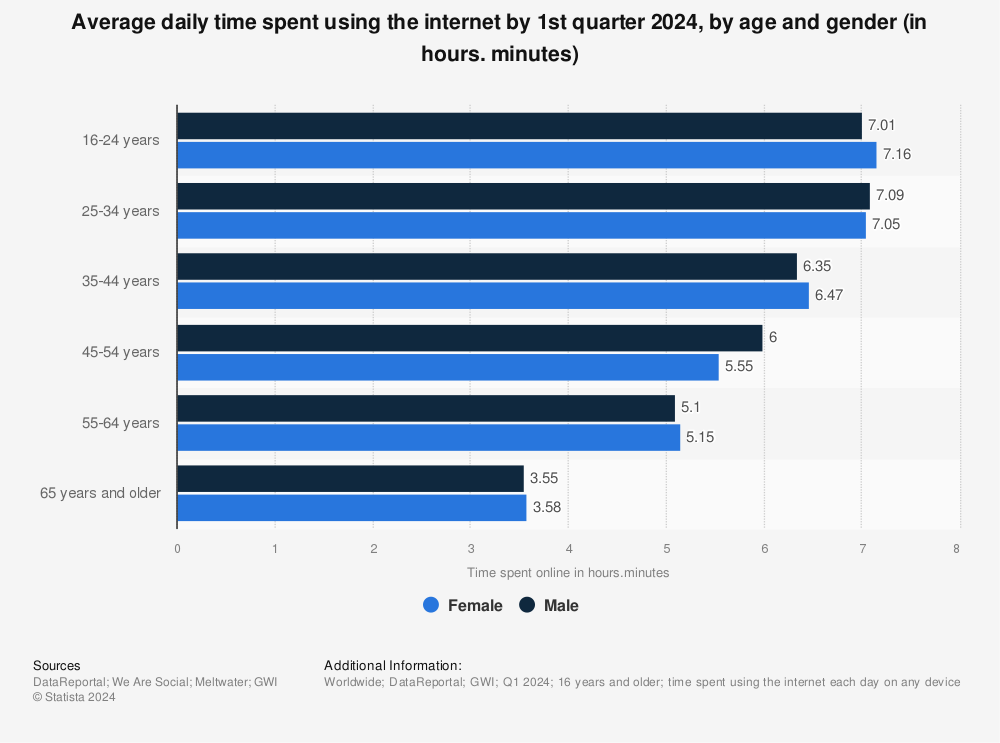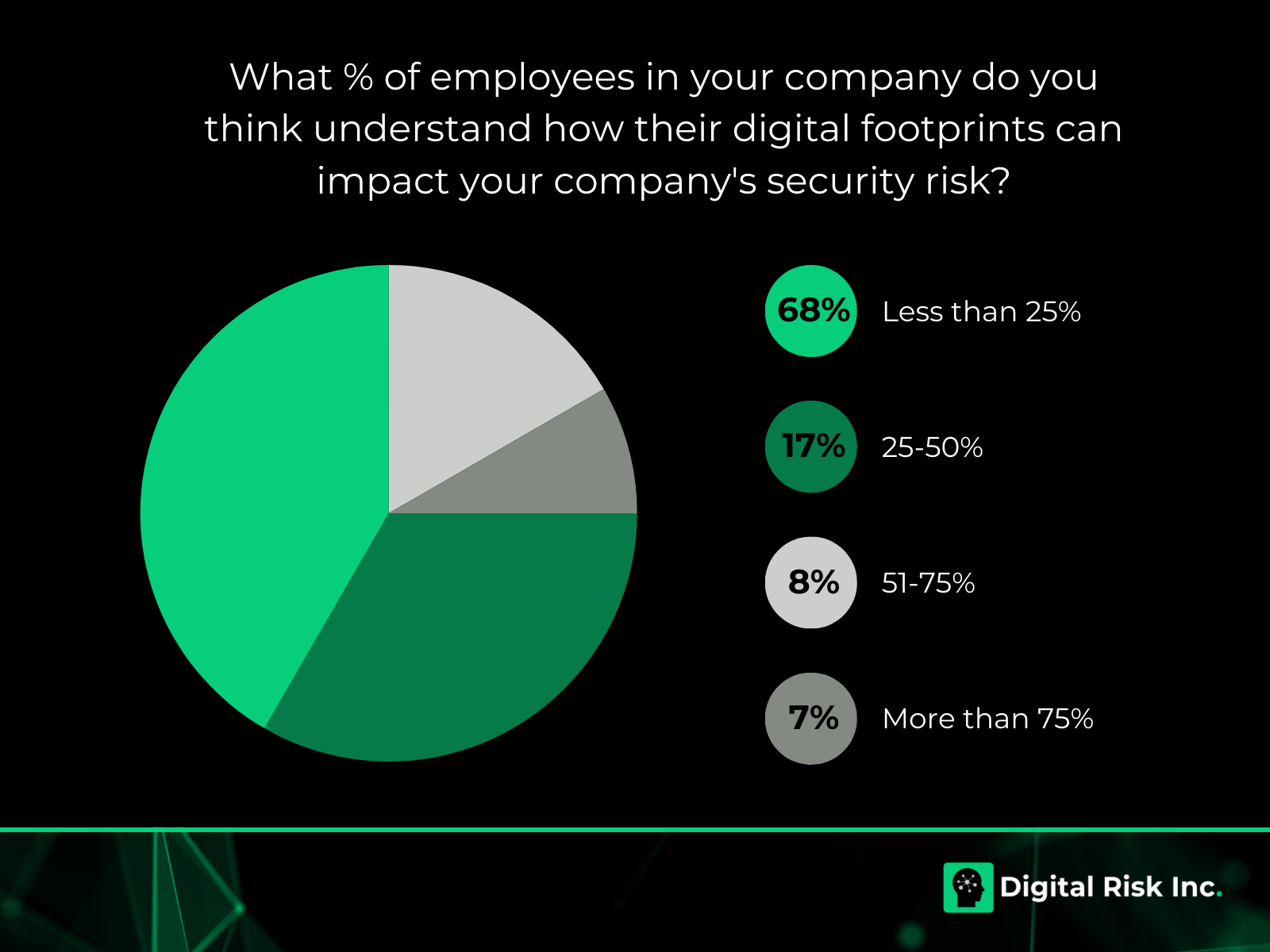In today’s interconnected world, every online interaction leaves a trace, forming what is known as a digital footprint. Digital footprints contain everything from social media posts and online purchases to search history and emails. While often overlooked, digital footprints can reveal a lot about an individual or organization and can be exploited for malicious purposes.
In this article, we share digital footprint statistics that paint a sobering picture of the scale, scope, and potential risks associated with digital footprints. First, we need to start by considering how many people are contributing to the vast web of information.
5.4 billion people use the Internet worldwide.
As of July 2024, the estimated number of Internet users worldwide was 5.45 billion. That’s 67% of the global population, all creating and leaving behind digital footprints each day. This number has seen rapid growth over the last two decades, rising 428% between 2005 and 2023. Forecasts show that this growth will continue, with an additional 1.1 billion Internet users expected to join between 2024 and 2029 (+17%).

People spend over 6 hours online every day.
At the end of 2023, Internet users spent an average of 6 hours and 35 minutes online daily. Notably, those aged 16-34, a significant and growing segment of the workforce, spend over 7 hours online each day. In that time, countless interactions, conversations, and transactions take place – all adding to an ever-expanding digital footprint. As more people spend more time online, digital footprint risks will continue to grow

Each person has an average of 6.7 social media platforms.
Think about all the information that you might leave behind on a single social media account— now multiply that by 6 or 7. On a global scale, the average individual manages 6.7 social media accounts, each contributing to their digital footprint. This social media activity is only a small fraction of what makes up a digital footprint. When you consider all the different ways we interact and engage online, the amount of information we leave behind is seemingly endless.
86% of adults have made efforts to reduce their digital footprint.
As Internet usage has surged, privacy concerns have become more prevalent. As a result, individuals are becoming more aware of the risks associated with their online activities. With 86% of US adults making efforts to reduce their digital footprints, it’s refreshing to see that the majority of people are becoming more vigilant about their digital footprint.
78% of Internet users have shared personal information online in the past year.
Despite growing privacy concerns, 78% of Internet users admit to having shared personal information online in the past year. This statistic highlights the ongoing challenge of balancing online activity with privacy, as even those with good intentions may still expose sensitive data. It serves as a reminder that, despite our best efforts, humans make mistakes.
63% of adults are willing to sacrifice online privacy in exchange for convenience.
Unfortunately, neglecting digital footprint hygiene isn’t always a mistake. In fact, 63% of adults worldwide say they are willing to accept online privacy risks for convenience. As technology continues to evolve and offer more conveniences, digital footprints will only become more complex. At the same time, these advancements make it easier for bad actors to track, target, and exploit individuals through sophisticated tools and automated attacks.

Over 50% of consumers would disclose their full name, email address, date of birth, and gender in exchange for better service.
Not only are people prepared to sacrifice their privacy in the name of convenience, but many are willing to deliberately disclose personal information for better service from a company. Marigold’s 2023 Global Consumer Trends Index found that more than half of consumers are willing to disclose their full name (54%), email address (64%), date of birth (66%), and gender (74%). There was also a significant portion of consumers willing to disclose home addresses (39%), annual earnings (37%), and location in real-time (31%).

Less than 25% of employees know the risks their digital footprints can create for their company.
When individuals are concerned about their digital footprints, it’s often from a personal privacy perspective. But, do employees know how their digital footprints can create risk for their company? Our research found that 68% of security professionals think less than one quarter of employees in their organization understand how their digital footprint can impact their organization. This highlights the urgent need for businesses to educate their employees on digital footprint management and take actions to assess and mitigate employee digital footprint risks.

Lessons learned from these digital footprint statistics.
There’s no question that the digital risk landscape is more intricate and influential than ever. These digital footprint statistics show that there has been some progress in terms of privacy concerns and overall digital footprint awareness. But, there is still a long way to go to create an established awareness of how digital footprints are formed, the risks they pose, and how to reduce these risks without sacrificing convenience and productivity. As technology evolves and our online presence grows, both individuals and organizations need to do their part.
Take Control of Digital Footprint Risks.
Know your exposure, take action against it, and minimize the impact that digital footprint risks can have on your business.